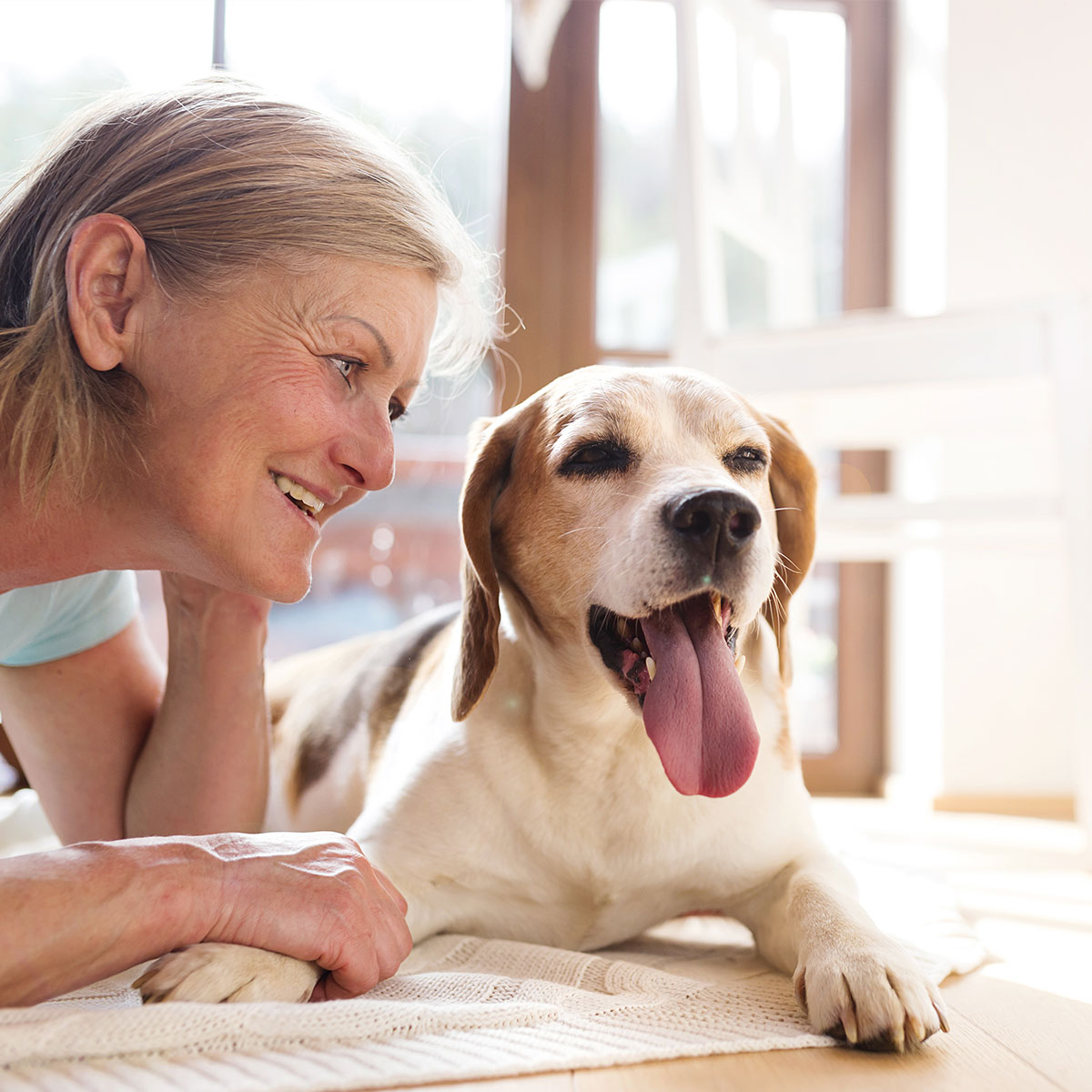As dogs grow older, their needs change. A home that once felt easy to navigate can become challenging when mobility issues, arthritis or vision problems arise. Slippery floors, steep stairs and hard-to-reach beds can all pose risks to an aging dog.
Making your home senior dog-friendly ensures they stay safe, comfortable and confident as they move around. Small adjustments can help them maintain their independence and reduce stress. Here’s how to create a safer, more accessible space for your senior pup.

Why Senior Dogs Need a Safer Home Environment
Older dogs face several challenges that make everyday movement more difficult. Common issues include:
A few simple changes in your home can help prevent injuries and give your senior dog a better quality of life.
How to Make Your Home Safe for a Senior Dog
1. Improve Traction on Slippery Floors
One of the biggest hazards for senior dogs is slick flooring. Hardwood, tile and laminate floors offer little grip, making it easy for dogs to slip and fall. To improve traction:
2. Provide Easy Access to Beds, Sofas and Cars
Senior dogs often struggle with jumping due to joint pain and stiffness. To help them get on and off elevated surfaces safely:
3. Set Up a Comfortable Sleeping Area
Older dogs sleep more than younger ones, so providing a supportive, warm bed is essential. Look for:
Place the bed in a quiet, draft-free area where your dog can rest undisturbed.
4. Modify Stairs and Entryways
Climbing stairs can be tough for senior dogs with arthritis or hip problems. To make stairs safer:
If your home has multiple levels, consider keeping their essentials downstairs to minimize stair use.
5. Create a Safe Outdoor Space
Older dogs need a secure outdoor area where they can move around safely. To make your yard senior-friendly:
If your dog enjoys spending time outside, make sure they have easy access to water and a comfortable spot to rest.
6. Make Food and Water More Accessible
Senior dogs may struggle to reach food or water bowls if they have joint pain. To help:
For dogs with poor eyesight, keep food and water in the same spot to avoid confusion.
7. Improve Lighting and Visibility
Vision loss is common in senior dogs, making it harder for them to navigate familiar spaces. Simple adjustments can help them feel more secure:
These small changes help prevent disorientation and accidents.
8. Keep Floors Free of Clutter
A cluttered floor can be an obstacle course for an aging dog. To prevent trips and falls:
A clear, open space makes it easier for your dog to move around with confidence.
9. Maintain a Comfortable Temperature
Older dogs are more sensitive to temperature changes. To keep them comfortable:
Maintaining a cozy environment helps reduce stiffness and promotes better sleep.
10. Schedule Regular Vet Check-Ups
Even with home modifications, regular vet visits are essential for monitoring your dog’s health. Your veterinarian can:
Staying on top of your dog’s health ensures they get the care they need to stay active and happy.
Making your home senior dog-friendly doesn’t have to be complicated. Small changes like adding rugs, using ramps, improving lighting and creating a comfortable sleeping area can significantly improve your dog’s safety and quality of life.
By creating a home that supports their needs, you can help your senior dog stay confident, comfortable and active in their golden years.
Related Posts
Helping Your Senior Dog Feel Brave Again After a Slip or Fall
Gentle Behavior Tweaks That Make Life Easier for Aging Dogs and Their Humans
How to Help Your Senior Dog Navigate Stairs Without Stress

